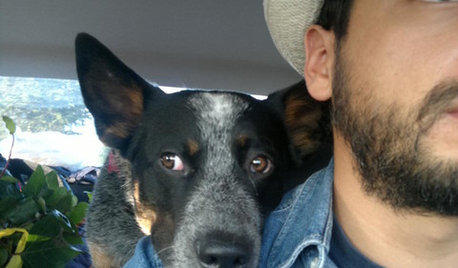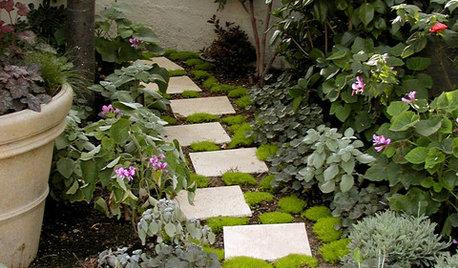Dog safety & fast ground cover (rye?)
tadasana
11 years ago
Related Stories

GROUND COVERSGround Force: 10 Top Ground Covers for Your Garden
Protect your soil from weeds and drought this summer with a living mulch of ground covers
Full Story
GREEN BUILDINGThe Big Freeze: Inventors Break New Ground to Keep Things Cool
Old-fashioned fridges can be energy guzzlers, but there are more eco-friendly ways of keeping food fresh, as these global innovations show
Full Story
DECORATING GUIDESNo Neutral Ground? Why the Color Camps Are So Opinionated
Can't we all just get along when it comes to color versus neutrals?
Full Story
PETS6 Ways to Help Your Dog and Landscape Play Nicely Together
Keep your prized plantings intact and your dog happy too, with this wisdom from an expert gardener and dog guardian
Full Story
PETS50 Dog Photos Worth a Wag
Design hounds: Share in the pet love with Houzzers' snapshots of their beloved dogs at home, in the workshop and at play
Full Story
PETSHow to Help Your Dog Be a Good Neighbor
Good fences certainly help, but be sure to introduce your pup to the neighbors and check in from time to time
Full Story
GARDENING AND LANDSCAPINGPlants for Your Pathway
Pretty up your garden walk with the right ground cover between pavers
Full Story
MOST POPULARMeet a Lawn Alternative That Works Wonders
Carex can replace turfgrass in any spot, is low maintenance and adjusts easily. Add its good looks and you’ve got a ground cover winner
Full Story
LANDSCAPE DESIGN7 Low-Maintenance Lawn Alternatives
Turf isn't the only ground cover in town. Get a lush no-grass lawn with clover, moss and other easy-care plants
Full Story
GREAT HOME PROJECTSHow to Replace Your Lawn With a Garden
New project for a new year: Lose the turfgrass for energy savings, wildlife friendliness and lower maintenance
Full StoryMore Discussions






tadasanaOriginal Author
slowpoke_gardener
Related Professionals
Holly Springs Landscape Architects & Landscape Designers · Simpsonville Landscape Architects & Landscape Designers · Piqua Landscape Architects & Landscape Designers · McKinney Landscape Contractors · Aberdeen Landscape Contractors · Conroe Landscape Contractors · Kaysville Landscape Contractors · Mission Viejo Landscape Contractors · Oak Harbor Landscape Contractors · West Chester Landscape Contractors · Four Corners Landscape Contractors · Green Bay Decks, Patios & Outdoor Enclosures · Tomball Decks, Patios & Outdoor Enclosures · Universal City Decks, Patios & Outdoor Enclosures · West Chester Decks, Patios & Outdoor EnclosurestadasanaOriginal Author
helenh
tadasanaOriginal Author
Okiedawn OK Zone 7
tadasanaOriginal Author
tadasanaOriginal Author
Okiedawn OK Zone 7
tadasanaOriginal Author
tadasanaOriginal Author
Okiedawn OK Zone 7
helenh
tadasanaOriginal Author
slowpoke_gardener
tadasanaOriginal Author